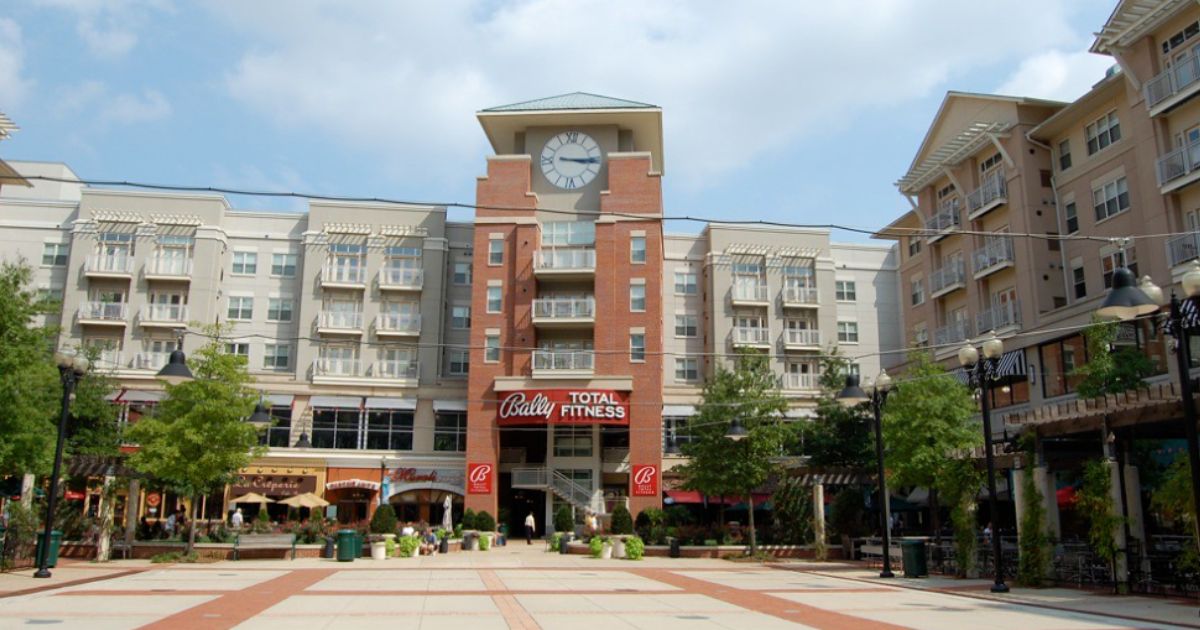
Advocates for mass transit want to see more investment in transit-oriented development (TOD) and 15-minute cities like those in Europe. These developments are specifically built around existing and future public transit access and foster more opportunities for people to live, work, and play in the same area. Transit oriented development encourages people to walk, bike, or take public transportation instead of driving, reducing traffic congestion and air pollution, and improving public health with increased pedestrian activity.
Transit-oriented development can also increase property values in surrounding areas by attracting new businesses and investment, which helps to create jobs and boost the local economy.
But the reality here in the US is mostly mixed-use development. These are usually large, gated communities built on private land that provide a few walkable blocks of an urban experience. Foot traffic translates into a small-scale city experience typified by food halls, pop up stores, and a variety of special events.
Mixed-use developments have sprung up all along major highway corridors in US cities, but unfortunately, they are greenfield developments located outside of existing transit zones. And even brownfield development within a city is not necessarily transit oriented. A good example is Atlanta’s Ponce City Market. On the surface there’s much to like about the complex. It was a thoughtfully designed renovation of a property originally owned by Sears Roebuck. Reopened in 2014, it contains office space, restaurants, shops, and housing. However, it’s situated in what is currently a transit desert. While there is pedestrian access via the Atlanta Beltway, there is no direct bus or MARTA subway line. Instead, most visitors have to drive their vehicles to and park in a garage on site.
Of course, supporters will point out that this is the start of development in an area, the Old Fourth Ward, that was characterized by urban decay, and that development will ultimately revitalize the entire neighborhood. But gentrification of former low-income areas displaces longtime residents by driving up the cost of housing. High-end flagship stores replace more affordable supermarkets and drugstores. Economic benefits are not immediate either. According to professor and author Dan Immergluck, Ponce City Market pays only a fraction of the property taxes it should, “a quarter-million dollars in property taxes when it should be paying close to $20 million.” The result is an estimated loss of tens of millions of tax dollars from a property that has an approximate worth of $1 billion.
Many of us think we could design a neighborhood better than the car-dependent, suburban model that’s existed for decades. It’s unfortunate, therefore, that mixed-use developments just miss the mark. They feel planned, not like a community that has organically evolved to fit its residents. As Rachel Quednau noted in this article in Strong Towns, “We cannot manufacture productive places like a cargo cult, simply by adopting some of the characteristics of other productive places we’ve visited or heard about; we have to drill deep to uncover why those places were actually productive. It wasn’t just because they were walkable or built more compactly, it was because they developed over time, through trial and error, with resilient, bottom-up practices, rather than a top-down, megaproject, debt-based mentality.”
It’s not all bad news, though. These developments are a move in the right direction – they are proof that people want to walk, not drive, to neighborhood shops, restaurants, and offices. And with the implementation of bus rapid transit, it’s possible they could serve as a nexus connecting to other communities and large private and public spaces like hospitals or government offices. As agencies continue to deal with the drop in ridership, redirecting transit routes to these areas – and away from underused business districts – may be key to increasing ridership. And of course, many now expensive neighborhoods – like the brownstone lined streets built in Brooklyn in the 19th century – started out as large-scale, planned developments. Perhaps mass transit is all we need to make mixed use developments just as popular.
Image credit: Photo by bartux at https://www.flickr.com/photos/barxtux/ Available under a Creative Commons Attribution License – NonCommercial-ShareAlike 2.0 Generic (CC BY-NC-SA 2.0)